What is an F1 aero rake?
All of the F1 teams use them but what is an aero rake and how does it actually work?
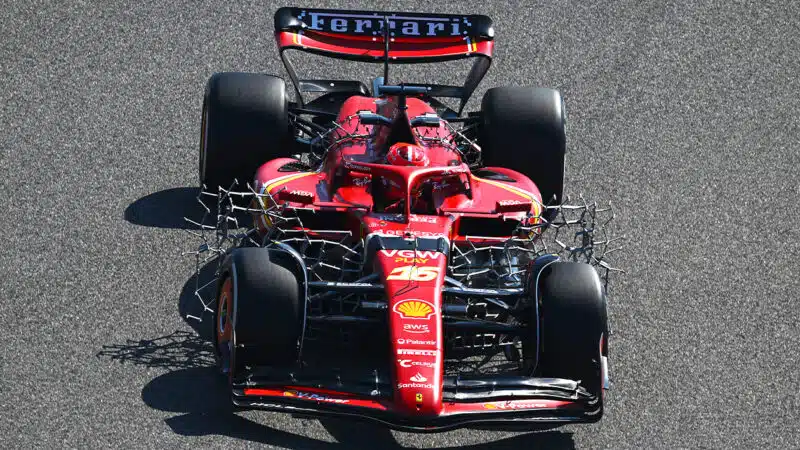
Ferrari brought intricate aero rakes to testing in 2024
Clive Mason/Getty Image
Just when you’re expecting to finally glimpse the new season’s F1 cars, teams send them out covered in lightweight scaffolding.
The first day of testing almost always sees the appearance of fence-like structures hanging off the cars. Usually attached just behind the front axle or around the rear axle and diffuser, these fences are known as aerodynamic rakes and measure the air pressure over the car at any one point.
Not all aero rakes are the same. Last year, in 2024 testing, Ferrari fitted expensively custom-made, 3D-printed titanium devices to its car. Others stuck with more standard rectangular elements. All teams run an aero rake at some point during testing as they look to ensure there is correlation between their wind tunnel simulations and real on-track running.
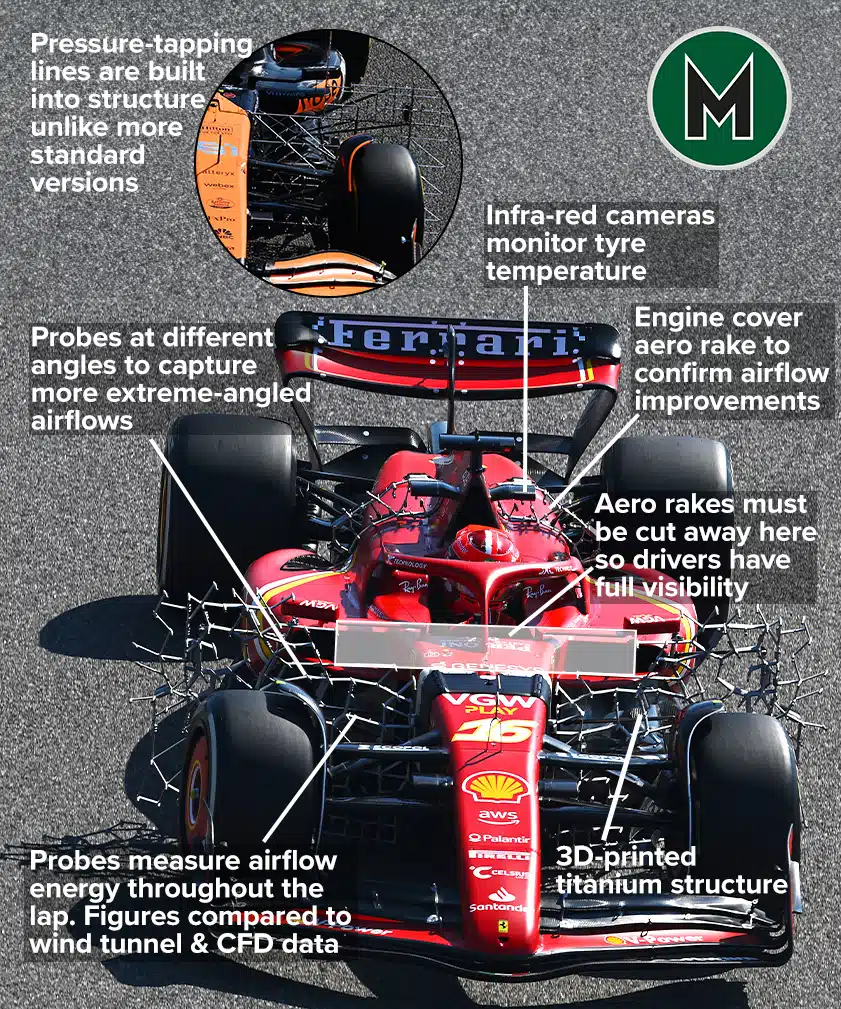
With a minimal amount of testing allowed, designers rely on simulations and wind tunnel testing to ensure that they are going in the right direction. But it’s only when the cars pull out of the pitlane that they will know whether their data is replicated in the real-world.
If there’s a discrepancy between them, then teams could have spent all winter heading down a dead end and a rapid trip back to the drawing board could be in order.
Here are the full details on how aero rakes work, with the help of Pro-Aero.
What is an F1 aero rake?
Made from special alloys such as titanium, the aero rakes used by F1 teams are capable of registering multiple readings in real time and feeding them back to engineers while the car is out on track.
Multiple Kiel probes are attached to the metal fence. These measure the pressure of airflows within a 60-degree range, so can capture flows at different angles — unlike pitot tubes.
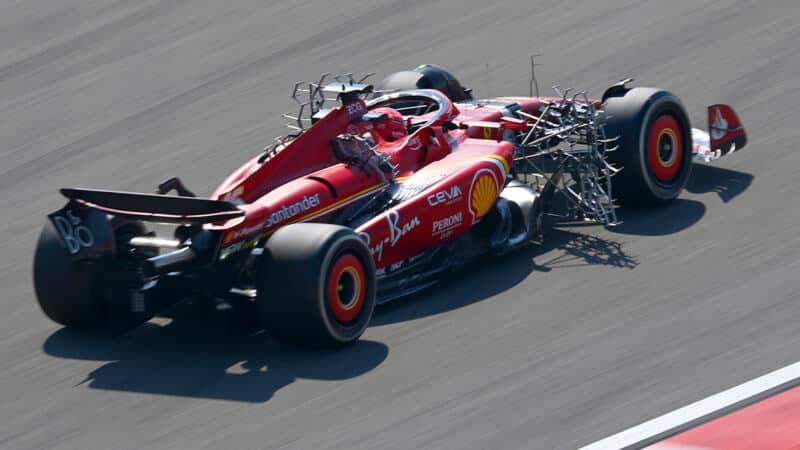
Aero rakes are frequently fitted behind the front and rear wheels. Ferrari also had an engine cover rake in 2024
Clive Mason/Getty Images
The readings give engineers a clear view of how air is channelled over the bodywork and aerodynamic components; where turbulent ‘dirty’ air is affecting performance; and areas of high and low pressure across the car.
Rakes can vary from as little as 50mm all the way to 600mm in length.
How does an aero rake work?
The aero fence is comprised of Kiel probes that register the flow of air over each data point.
Each probe is shrouded by a protector shield with the probe itself registering the pressure of the air which is then fed back to teams and engineers live.
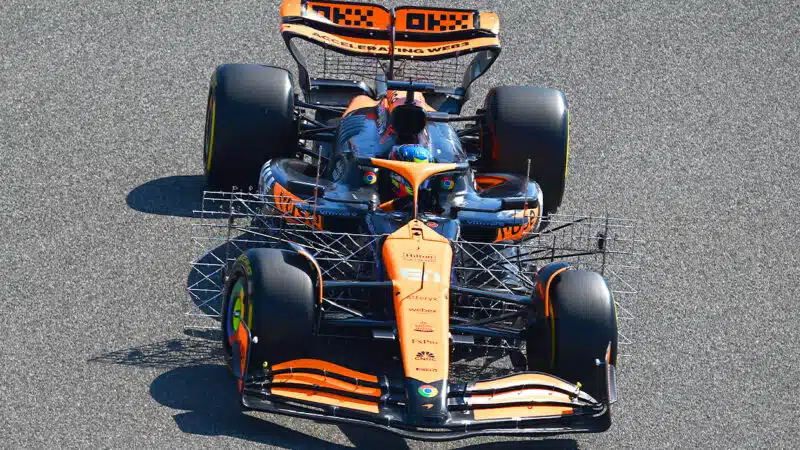
2024 McLaren with front wheel and rear wing aero rakes
Clive Mason/Getty Images
Kiel probes are useful for Formula 1 teams because they are less sensitive to changes in yaw angle than pitot tubes, which measure air pressure on aircraft. This is handy when the cars in question are capable of pulling 5g through some corners before immediately flicking into the opposite direction for the next.
All of the captured data is the used to formulate a virtual map of the airflow travelling over the car while it’s in motion.
The accuracy of an aero rake is in the range of 10 microns, or 0.01mm.
How do teams use aero rakes?
Aero rakes are typically fitted around the axles because it’s here that the wheel wake is generated: a swirling mass of air disturbed by the rotating wheels, which can wreck a car’s aerodynamic performance unless kept away from the floor and rear diffuser that are responsible for generating most of the downforce.
Aerodynamicists spend much of their time working out how to channel air that will draw that wake away from the car, or form a curtain that prevents it from drifting inwards, and an aero rake will allow them to visualise this.
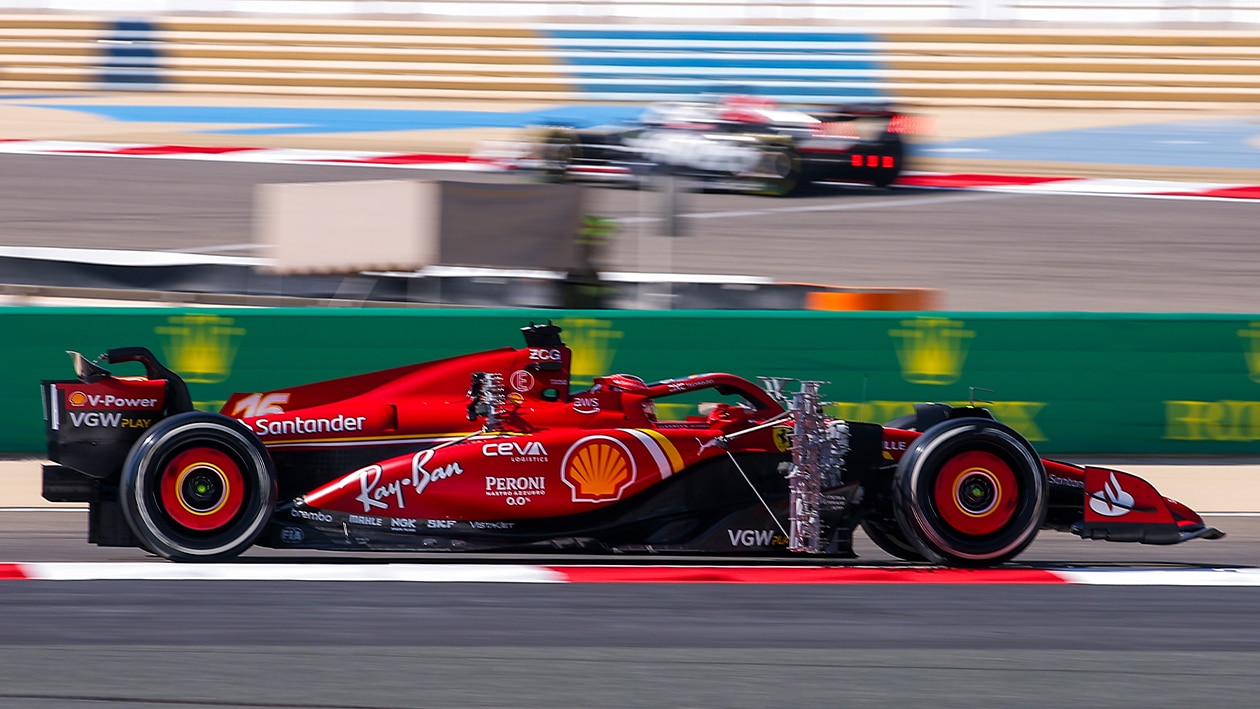
Ferrari went a step further than most in 2024 with its bespoke aero rake. This included probes set at different angles in an attempt to get a better picture: given the limited 60-degree range of each probe, more extreme angles of airflow won’t be picked up if they are all pointing in the same direction.
The 3D-printed device also incorporates the rake’s pressure-tapping lines, reducing the additional elements around the car, but is considerably more expensive than a standard rectangular rake.
In addition, Ferrari fitted ‘collar’ rakes behind on either side of the engines, behind the cockpit which generates more turbulent air that designers are keen to keep high and away from the lower downforce-generating sections.
This is also a section that can be affected by the strut that holds the car in wind tunnel testing. The pillar runs into the cockpit and can deflect the airflow, so correlating the data in this area is crucial.
2024 testing saw McLaren fitting a rake underneath its rear wing, while most other teams had large fences behind their front wheels — each cut back around the cockpit as a result of an F1 regulation to ensure that drivers have full visibility at all times.
